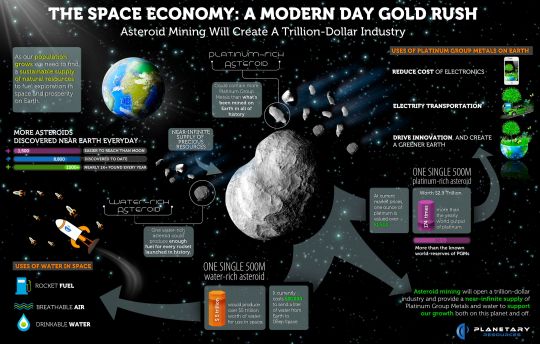Video
youtube
The Chelyabinsk Meteor that slammed into our atmosphere (at 12 miles per second) was a clear shot across our intellectual bow. If want to remain and persist, we owe it to our civilization - past, present, future - to support the endeavors currently permitting us to meticulously study our universe and effectively safeguard life on Earth from natural disasters outside of our terrestrial environment.
It’s easy for us to step into a movie theater or entertain ourselves with imaginative odysseys through space. What’s left out of films like ‘2001’, Interstellar, Star Trek, are those who worked on the frontier of safeguarding our planet and ultimately, our future.

Astronauts Ed Lu (former NASA astronaut, project manager on Google’s Advanced Projects Team) and Rusty Schweickart (former NASA astronaut, Apollo 9) are people among us that have not only seen our planet from space, but returned to Earth with a directive committed toward protecting it. They’ve organized a team of space experts who are all working on viable solutions to asteroid deflection, which will also aid in deep space missions.
“There’s a 30% chance there’s a 5 megaton (or larger) asteroid that’s going to hit us this century. Currently, the amount of warning time we are likely to get against one of those is zero.”

On March 20, 2013, Ed Lu’s testimony "Assessing the Risks, Impacts, and Solutions for Space Threats" was presented to Congress. It not only addresses the severity of our vulnerability and weak ability to forecast the types of events such as the above video compilation of perspectives during the Chelyabinsk event, he provides a stark reminder that the data we are continuously collecting from research institutions such as the Jet Propulsion Laboratory (JPL) are extremely informative and should take precedence over our short-term priorities.
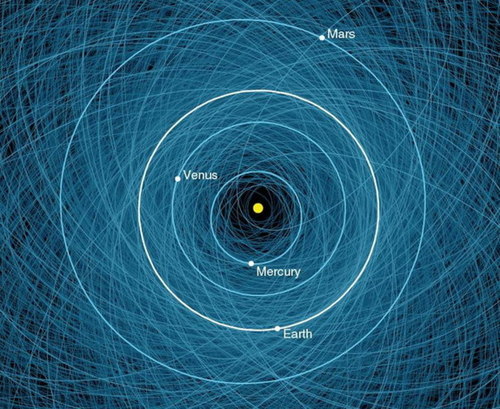
Known asteroid orbits amidst our solar system. We don’t just have an asteroid belt, we exist in a true “cosmic shooting gallery.” This is a collective database of Near-Earth Asteroids. For everyone single asteroid we know about, there’s over 100 more we don’t know about.

The B612 Foundation has a plethora of options for protecting Earth from asteroid impacts. However, in order to find them, we need an early warning system. To this measure, they’ve developed a space telescope - - dubbed the ‘Sentinel Mission’ (due to launch in 2018) - which will remain in a stable orbit around the sun (which, due to angular momentum, will be faster than Earth). In collaboration with Ball Aerospace (responsible for the development of the Spitzer and Kepler space telescopes), the purpose of this spacecraft’s position will be to survey the portion of the “sky’ we can’t see when looking toward the direction of the sun. Sentinel will not only be able to move faster around the sun, but have its back to it, and collect 100 times more data on asteroids than all other telescopes combined.
“With all telescopes available within the last 30 years, they’ve (combined) discovered around 10,000 Near Earth Asteroids. Sentinel will discover over 10,000 Near Earth Asteroids every two weeks.”
The B612 Foundation is a philanthropic, non-profit which will openly share its data with the world. A hybrid of the technical sophistication of NASA and the economic strategies at Google, B612 Foundation is literally the best of the best of our society working on one of the most important endeavors of human history (and future).

Learn more about the importance of the B612 Foundation and Sentinel.
In collaboration with NASA, the B612 Foundation will utilize the Deep Space Network (DSN) to transmit data. Tracking and receiving robust data on asteroids that simply pass by Earth will aid tremendously in the progression of the entire space industry for human/robotic exploration, along with asteroid mining.
“If you find it early (decades in advance) - which is what the goal of NASA and the B612 Foundation is to do - then you only have to change its trajectory a very tiny amount. If you change an asteroid’s speed by about a millimeter per second (that’s about the speed that an ant walks), and you do that decades or more in advance, you can make it miss the Earth. Right now, we have no options.”

Learn about the NASA-funded project called ATLAS (due to be operational by 2016/2017), which will detect incoming asteroids using a network of telescopes scanning the entire sky 4 times per night with the goal of providing an advance of 1 month “city-killer” and 1 week “country-killer” warning of an asteroid en route to impact.
Stay curious. Support the B612 Foundation and Sentinel Mission by sharing this with others and getting involved.
346 notes
·
View notes
Video
youtube
THE OCEAN CLEANUP PROJECT
Guys, this is huge. We have the potential to clean up one of the biggest messes humanity has made: The plastic in the ocean.
THE PROBLEM
Through littering and other such forms of carelessness, we have introduced millions of tons of plastic into the oceans. This plastic is trapped in the five major currents running through the world’s major oceans, called gyres. There is currently six times more plastic in the water than zooplankton, which is one of the most basic elements of the worldwide food chain. Plastic in the oceans leads to ecological, economical, and health issues for everyone, including people.
THE SOLUTION
Really, the solution is to cut the problem off at its source and find ways to stop introducing plastic and other garbage into the oceans. But, as for all the trash that is already there, a 19-year-old man named Boyan Slat has come up with an idea: Get the oceans to clean themselves. This idea has three basic principles:
1) Passive collection
“Why move through the oceans, if the oceans can move through you? Attaching an array of floating barriers and platforms to the sea bed enables us to concentrate the plastic before extracting it from the ocean —a collection process 100% driven by the natural winds and currents.”
2) Capturing plastics, not sea life
"Instead of nets, we make use of solid floating barriers, making entanglement of wildlife impossible. Virtually all of the current flows underneath these booms, taking away all (neutrally buoyant) organisms, and preventing by-catch, while the lighter-than-water plastic collects in front of the floating barrier."
3) Highly scalable
"The scalable array of moorings and booms is designed for large-magnitude deployment, covering millions of square kilometers.
Thanks to its projected high capture and field efficiency, a single gyre can be covered in just 5 years (or longer, depending on the chosen deployment strategy).”
IS THIS EVEN POSSIBLE?
Great news: Yes! In June of 2014, Slat and his team of 100 professionals and volunteers announced that this can happen. You can download the full report here, or the summary here. You can also watch Slat’s recent talk to find out more about how the project really works right here.
WHAT CAN I DO?
Slat and his team are currently running a crowdsourcing campaign. They need to raise $2 million US dollars to move from the feasibility phase to the implementation phase. That sounds daunting, but really, if 322 people donating just over $6 each, the money will be raised and we can start cleaning up our mistakes and making the world better for the future. As of the 27th of June, they have raised $878,000+ and have 77 days to go. Please donate if you can by clicking here or on the bolded link above, or reblog this and share it anywhere and everywhere you can to raise awareness!
You can also contact Slat and his team and apply to work with them by clicking here. If you have more questions, please visit the website or check the FAQ.
2K notes
·
View notes
Photo
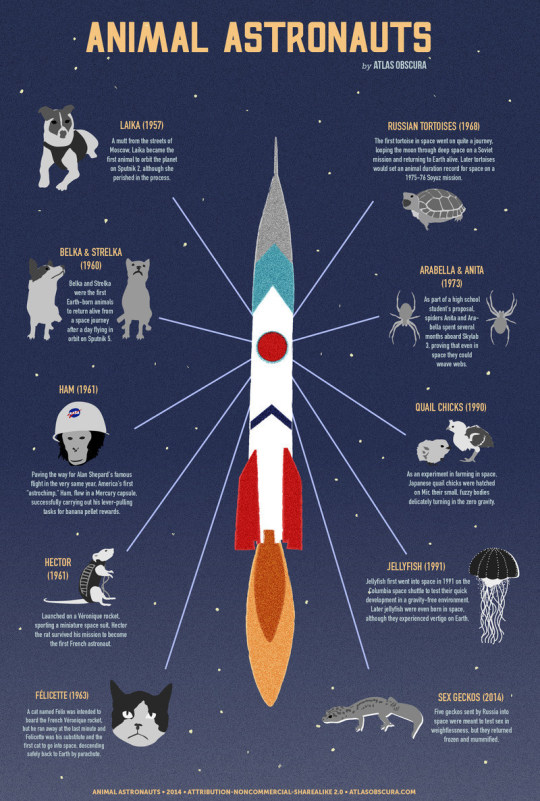
A GRAPHIC GUIDE TO SPACE ANIMALS
BY ATLAS OBSCURA / 03 NOV 2014
Today marks the anniversary of the first Earth-born creature circling our planet from Space. None of these creatures chose to go on such voyages, and while there is something somber in that lack of consent, these brave creatures are also representative of the expansion of possibility in space exploration.
Check out Atlas Obscura for some of these incredible astro-beasts.
1K notes
·
View notes
Video
youtube
The unexpected math behind Van Gogh’s “Starry Night”
Physicist Werner Heisenberg said, “When I meet God, I am going to ask him two questions: why relativity? And why turbulence? I really believe he will have an answer for the first.” As difficult as turbulence is to understand mathematically, we can use art to depict the way it looks. Natalya St. Clair illustrates how Van Gogh captured this deep mystery of movement, fluid and light in his work.
View full lesson: http://ed.ted.com/lessons/the-unexpected-math-behind-van-gogh-s-starry-night-natalya-st-clair
Lesson by Natalya St. Clair, animation by Avi Ofer.
By: TED-Ed.
434 notes
·
View notes
Photo
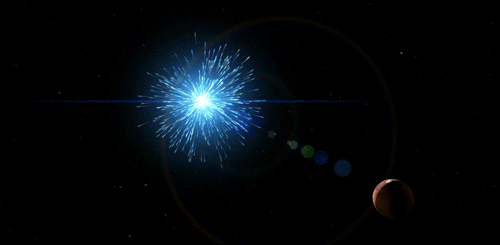
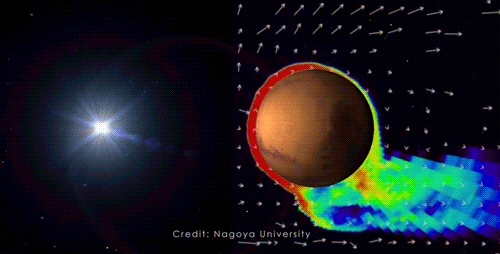
Solar wind and Mars’ Atmosphere
Mars does not have a single unified magnetic field like Earth. It has smaller, more fractured fields which cover the planet and have different intensities and polarities. The absence of magnetic protection allows the supersonic solar wind flow to directly interact with the Martian ionosphere.
The Sun constantly emits high-energy photons (gamma rays) and when one of these photons enters the atmosphere of Mars, it can crash into a molecule, knocking loose an electron and turning it into an ion. These ions can then crash into other molecules and fling atoms everywhere. Some of these atoms can be knocked, or sputtered, into space, causing atmospheric loss. The amount of ionization in the ionosphere varies greatly with the amount of radiation received from the Sun. When the velocity of the solar wind increases, the Martian ionosphere is compressed and the ionopause (a boundary layer between the ionosphere and the solar wind) is displaced to lower altitudes.
Further Reading:
Mars Atmosphere and Volatile Evolution (MAVEN)
Mars’ magnetic field
Solar wind modulation of the Martian ionosphere observed by Mars Global Surveyor
Sputtering of the Martian atmosphere by solar wind pick-up ions
Credit: Chris Smith (HTSI), NASA/Nagoya University
1K notes
·
View notes
Photo
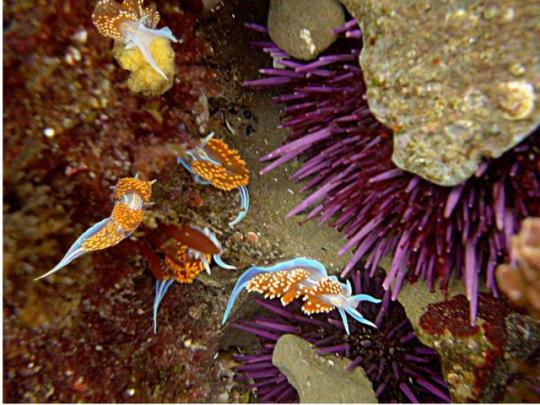

Hermissenda crassicornis
Sometimes known as the “opalescent sea slug”, H. crassicornis is a species of Facelinid nuibranch which inhabits coastal intertidal zones from Alaska south to Mexico. Like other nudibranch species H. crassicornis feeds mainly on sessile invertebrates, specifically hydrioids and occasionally sea anemones, tunicates, and others.
Classification
Animalia-Mollusca-Gastropoda-Heterobranchia-Euthyneura-Nudipleura-Nudibranchia-Dexiarchia-Cladobranchia-Aeolidida-Aeolidioidea-Facelinidae-Hermissenda- H. crassicornis
Images: Brocken Inaglory and Jmalin
593 notes
·
View notes
Conversation
Women: Why do men spit in public?
Men: Where ELSE should we spit? On you??? Do you want us to spit on YOU!?! Alright, FINE.
Women: A teenage girls bra strap shouldn't be a reason to send her home.
Men: Okay. Okay, alright. Alright, okay, okay. Well why don't I just PULL MY DICK OUT IN CLASS THEN!?!?
Women: A person should have the right to an abortion.
Men: Ohhhhh women want abortions! Well men should be able to rape them, that seems like the logical equivalent of this situation.
Women: Women need to defend themselves from violent men.
Men: Oh, what, you can hit me but I can't hit you!? why CAN'T I hit you? WHEN can I hit you??? Tell me when I can hit you, please. I want to know. I need to know.
Women: Men overreact a lot.
Men: WHOA. Why would you go there? Why do you generalize all men like that? I feel so attacked. This is so hurtful.
Men: This is why no one likes feminists.
584K notes
·
View notes
Photo

Saturn’s rings at maximum tilt toward Earth, March 2003, allowing the Hubble Space Telescope to get a rare glimpse of its southern hemisphere.
(HubbleSite)
2K notes
·
View notes
Photo
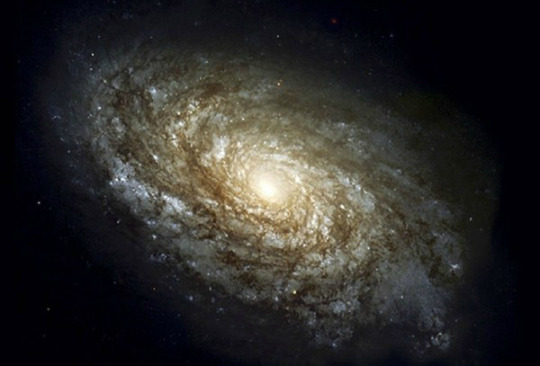
Galactic-Scale Electric Fields Could Solve Dark Matter Mystery, Says Physicist
Nobody has found convincing evidence of dark matter. Perhaps they should search for electric fields instead, suggests one researcher
Astronomers have long known that galaxies rotate too quickly, observation that has generated one of the great mysteries of astrophysics. The problem is that there is not enough visible mass in these galaxies to hold onto stars in their most distant regions. So something must be preventing these galaxies from flying apart and the mystery is that nobody knows what.
The most popular idea is that these galaxies are filled with dark matter that astronomers cannot see but provides enough gravitational force to hold everything together. But despite extensive searches, nobody has found convincing evidence that dark matter really exists.
Continue Reading
141 notes
·
View notes
Photo
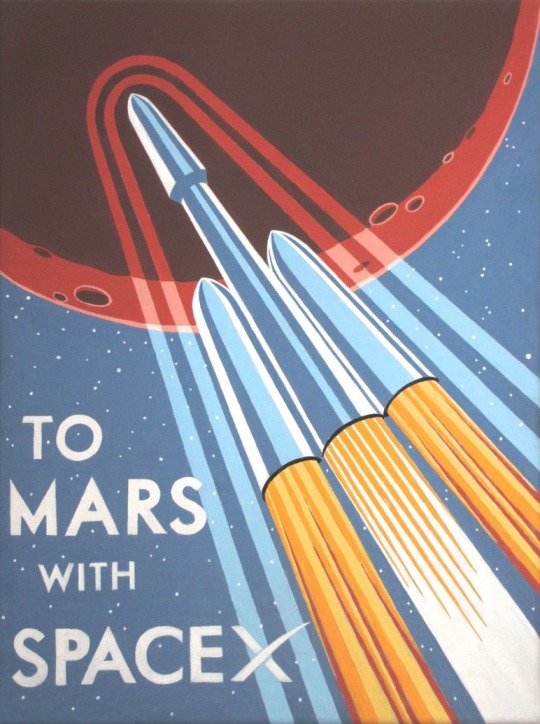
We talk about curiosity, the thrill of exploring, but rarely its purpose, particularly regarding space exploration. It’s necessary for the survival of life and to perpetuate our existence. Period. We must go. There is no backup plan and we owe it to our evolutionary lineage to preserve the genetic fabric of Earth life. As Tsiolkovsky said: “Earth is the cradle of mankind, but one cannot live in a cradle forever.” No matter your “opinion” on Elon Musk, someone right now in this era is on a mission to see this task through by taking the risks needed without pandering to the stifling methodologies of old. Musk is the proverbial “Sputnik” of entrepreneurs, and is spurring others to reach higher, see further. The goal is to survive and flourish, not to temporarily exist and whither.
Image by DecoEchoes @ deviant art.
262 notes
·
View notes
Video
youtube
NEW VIDEO! The 10 Things We Learned While Reading Carl Sagan’s ‘Cosmos’ for our brand new AsapSCIENCE Book Club!
http://youtu.be/EE8YPcgiCoE
Follow along on our #AsapBookClub subreddit for updates and discussions: reddit.com/r/asapteam
Get the AsapSCIENCE Book: http://asapscience.com/book
57 notes
·
View notes
Photo
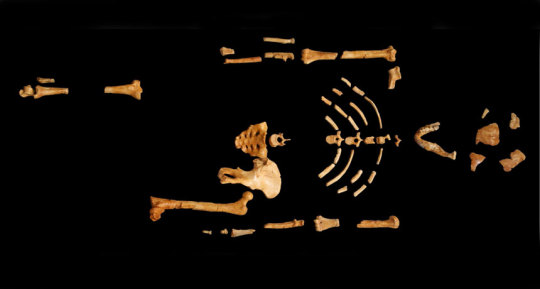
Human ancestor Lucy celebrates 40th anniversary
Donald Johanson recalls pivotal discovery of A. afarensis fossil in 1974
by Tom Siegfried
"Donald Johanson is always looking at the ground. “I find more quarters by parking meters than anybody I know,” he says. As he was looking at the ground four decades ago, in a region called Hadar, named for a dry riverbed in Ethiopia, he saw something a lot more exciting than a quarter. It was a fossil bone.
“I found a little piece of elbow,” he said last week in Columbus, Ohio, while addressing a conference of science writers. “And I knew from studies of osteology and comparative anatomy that this had to be from a human ancestor.” By two weeks later, Johanson and his colleagues had collected enough bones to reconstruct about 40 percent of a skeleton. Those bones belonged to a primitive human forerunner now known as Lucy.
Next month paleoanthropologists will celebrate the 40th anniversary of Johanson’s discovery of the elbow bone on November 24, 1974. In the intervening four decades, many more fossils along with other clues have been discovered, rewriting the story of the human race. The evolution of earlier humanlike species and eventually modern humans has grown from the outline of a play with a small cast to an elaborate production with more characters than an Agatha Christie mystery, many remaining enigmatic with relationships still unclear.
“These fossils tell us a great deal about who we are, where we come from and how we fit into the natural world,” said Johanson, of the Institute of Human Origins at Arizona State University. He summarized the fossil story in delivering the annual Patrusky Lecture, honoring Ben Patrusky, emeritus director of the Council for the Advancement of Science Writing.*
The prelude to the modern story goes back to 1856 — three years before Charles Darwin published his treatise on evolution by natural selection — with the discovery of a fossil in Germany’s Neander Valley in Germany. That fossil was the first specimen from Neandertal man. A dozen years later, fossils of Cro-Magnon man turned up in France.
But Neandertal and Cro-Magnon turned out to be relative youngsters in human history. Darwin and his champion, Thomas Henry Huxley, knew that the whole story would get much more complicated” (read more if you have nothing better to do).
(Source: Science News)
247 notes
·
View notes
Photo
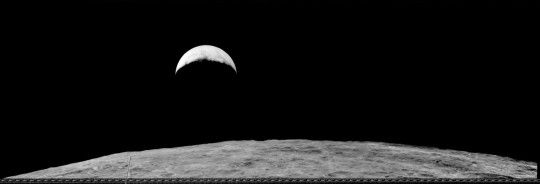
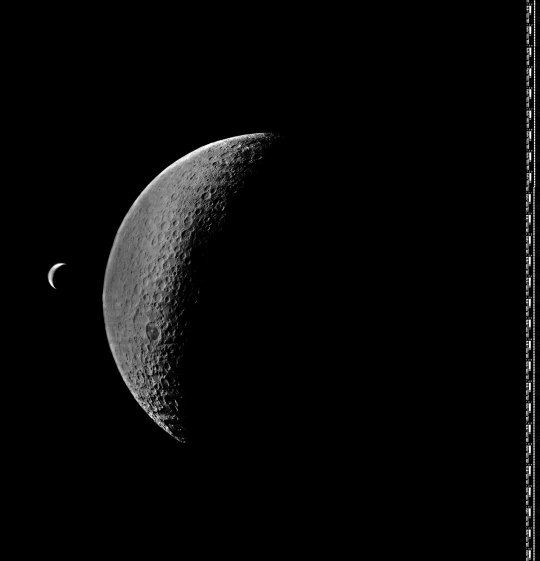



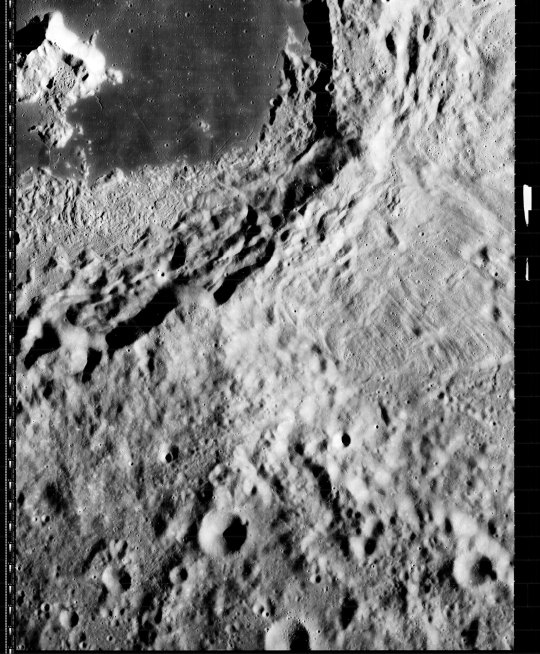
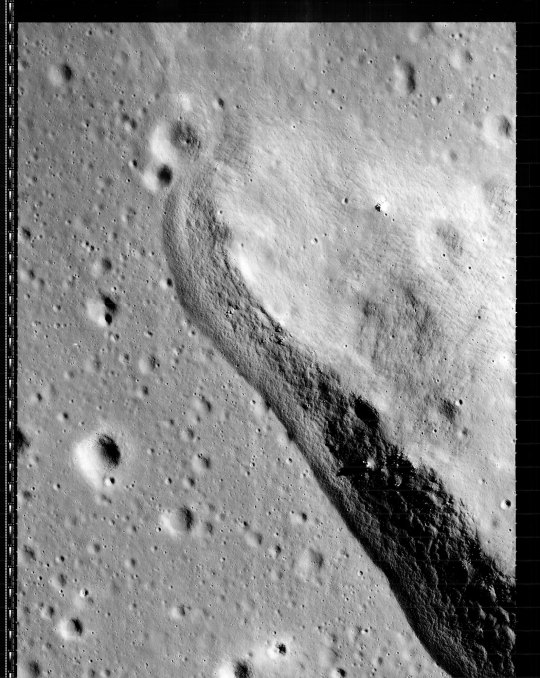
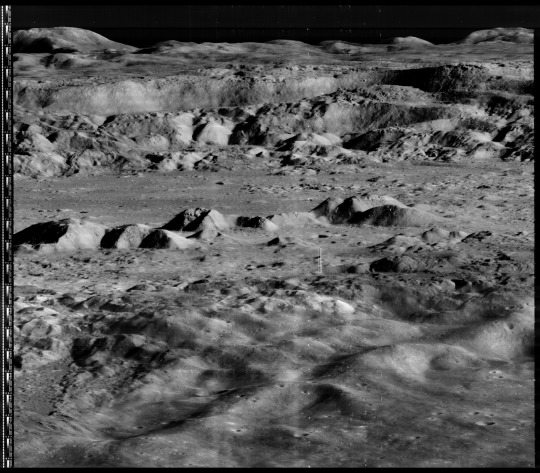
The Hackers Who Recovered NASA’s Lost Lunar Photos
Sitting incongruously among the hangars and laboratories of NASA’s Ames Research Center in Silicon Valley is the squat facade of an old McDonald’s. You won’t get a burger there, though–its cash registers and soft-serve machines have given way to old tape drives and modern computers run by a rogue team of hacker engineers who’ve rechristened the place McMoon’s. These self-described techno-archaeologists have been on a mission to recover and digitize forgotten photos taken in the ‘60s by a quintet of scuttled lunar satellites.
The Lunar Orbiter Image Recovery Project has since 2007 brought some 2,000 pictures back from 1,500 analog data tapes. They contain the first high-resolution photographs ever taken from behind the lunar horizon, including the first photo of an earthrise (first slide above). Thanks to the technical savvy and DIY engineering of the team at LOIRP, it’s being seen at a higher resolution than was ever previously possible. (source)
1K notes
·
View notes
Photo

vdB 152, Barnard 175
This image was obtained with the wide-field view of the Mosaic camera on the Mayall 4-meter telescope at Kitt Peak National Observatory. Also known as Barnard 175, vdB 152 is a reflection nebula atop of a dark Bok globule.
Embedded in the top right side of the nebula is the Herbig Haro object HH 450, a jet emitted from a newly forming star. The thin, red filaments in the upper-right corner of the image are the remnants of a supernova explosion.
It is not yet clear whether or not the supernova remnant will collide with vdB 152. The image was generated with observations in the B (blue), V (green), I (yellow) and Hydrogen-Alpha (red) filters.
574 notes
·
View notes
Photo

Microscopic structure of the carapace of a jewel beetle (Chrysochroa buqueti). Charles Krebs/Courtesy of Nikon Small World
206 notes
·
View notes
